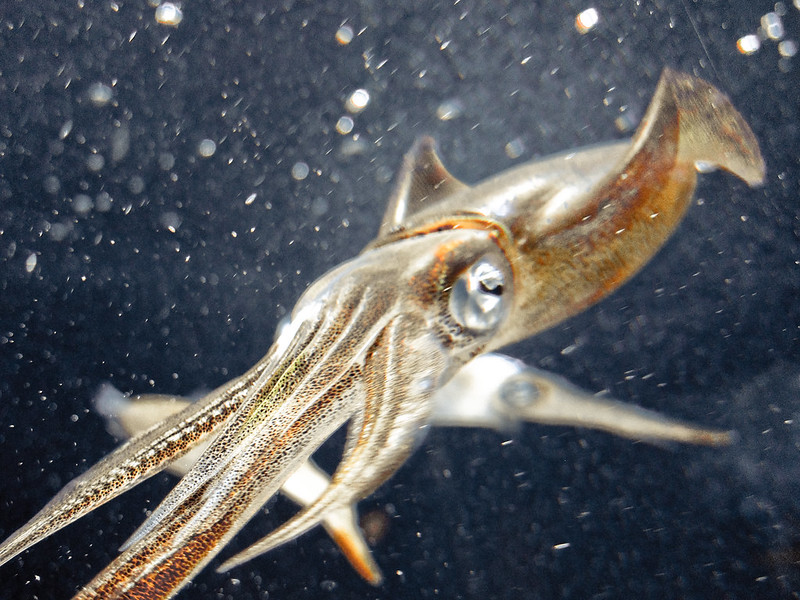Waterways and seas suffer the most when it comes to plastic pollution, with around six billion kilograms of the stuff finding its way into the world’s oceans every year. Once there, non-biodegradable pieces of plastic present hazards for both large and small marine animals, while the chemicals which seep from plastics have also been revealed to disrupt the hormonal developments of some sea life.
Many different solutions have been posed to tackle this issue, including large scale ocean clean-up projects, drones and bio-plastics which can decompose in much shorter timescales. In fact, researchers at a US university have discovered the oceans themselves could provide a novel bioplastic of the future – in the form of squid teeth.
Penn State University’s Center for Research on Advanced Fiber Technologies (CRAFT) have announced new research which reveals that the circular teeth-like structures on squid appendages, known as squid ring teeth (SRT), have a range of miraculous properties which could have uses in future smart fabrics and materials. What’s more, all this is achievable without harming a single squid.
According to a paper recently published in Frontiers in Chemistry, SRTs are not only strong, durable and biodegradable, but are also able to self-heal as well as provide optical, thermal and electrical conducting properties. The key to this flexibility is the molecular structure of the proteins, which can be modified in order to engender various responses.
The building blocks behind the proteins are arranged in such a way that so-called micro-phase separation occurs on a small, nano-scale. Essentially, this means the blocks can be rearranged into various shapes – such as repeating cylindrical blocks, disordered mixes or ordered webs – with the final shapes of the blocks dictating the properties and potential uses of the material.
From Squid Teeth to Hi-Tech Clothing
CRAFT’s researchers have already experimented with several different shapes to produce bioplastics which could be used in both broad and specific applications. For example, the optical ability of SRTs means they can fulfil a role similar to LEDs or other optical displays, but without the need for materials such as quartz, glass or heavy metals. When applied to garments, this material could be used in the developments of health monitoring ‘smart’ clothing, or for implantable devices concerned with biomonitoring and detection.
Furthermore, the self-repairing nature of SRT bioplastics means a thin film of the substance could be used to protect the damage prone biochemicals used in clothing, increasing their longevity and hardiness. The breakdown and erosion of these biochemicals and microfibers, especially in washing machines, is one of the major sources of microplastics making it into our water systems. The team claims the material could also be used for developing specialised clothing designed to protect against chemical and biological agents.
Of course, using animal products to solve environmental issues does not immediately seem like a useful and long-term solution. However, CRAFT director Melik Demirel is confident the process could be undertaken without needing to harm a single squid. His team has been able to replicate SRTs by modifying bacteria in an laboratory environment. He explained:
“We don’t want to deplete natural squid resources and hence we produce these proteins in genetically modified bacteria. The process is based on fermentation and uses sugar, water, and oxygen to produce biopolymers.”
Currently, this process has been undertaken in extremely small samples, and the next challenge would be scaling up the production to meet industrial demands and specifications. This would most likely take several years, however the development is still a step in the right direction in proving the use and benefit – both in terms of the environment and consumer products – of environmentally friendly bioplastics.






